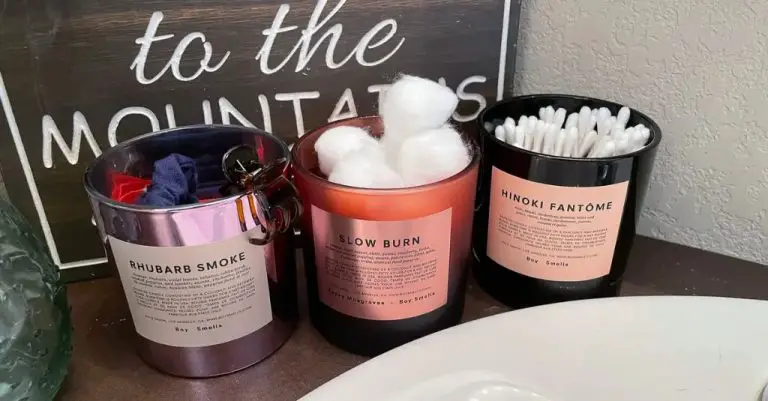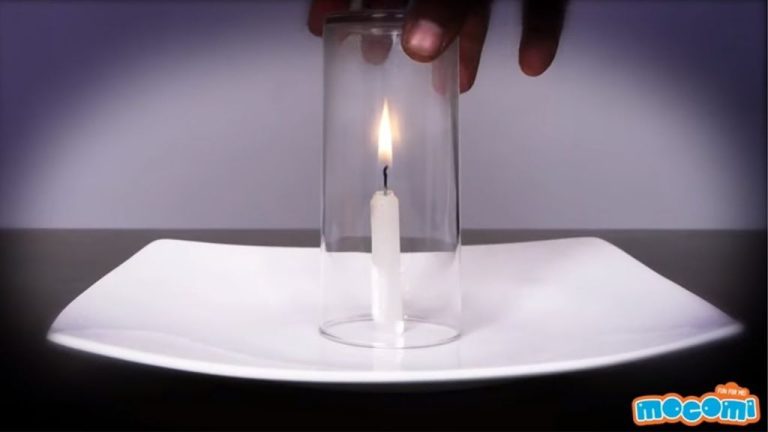Can Wax Burn Without A Wick?
Candles are a common source of light and ambiance in many homes. The flickering flame of a burning candle can create a soothing, relaxing environment. But have you ever wondered exactly how candles work? Specifically, can candle wax burn without a wick?
This article will examine the science behind how candles burn. We’ll look at how wax and wicks allow candles to burn, methods for burning wax without a wick, safety considerations, and products available for wickless candle burning. Read on to learn the interesting physics and chemistry that makes candles possible and how to safely burn wax without a wick.
What is Wax?
Wax is a substance made of long-chain hydrocarbons that is solid at room temperature. There are many different types of natural and synthetic waxes with varying properties and uses. Some common types of wax include:
Beeswax – Produced by honey bees, beeswax consists mainly of esters of fatty acids and alcohols. It has a high melting point and is used in cosmetics, candles, modeling, and more.[1]
Paraffin Wax – A petroleum-based wax made from the sludge left over from crude oil refining. Paraffin wax is commonly used to make candles, crayons, and cosmetics.
Carnauba Wax – Derived from the leaves of a palm tree, carnauba wax is very hard and has a high melting point. It’s used in car waxes, shoe polishes, dental floss, and food products.
The chemical composition of waxes consists mainly of esters, hydrocarbons, fatty acids, fatty alcohols, and other components that make the wax solid at room temperature. The exact chemical makeup depends on the specific type of wax.[2] The long hydrocarbon chains are what give waxes their malleable, solid structure.
How Wicks Work
A wick is a small piece of string or material that helps regulate and deliver the fuel (wax) to the flame in a candle. Without a wick, it would be very difficult to keep a candle burning. Wicks serve several key functions:
Wicks are made from different materials like cotton, paper, or wood. Cotton is one of the most common wick materials because it burns evenly and doesn’t create a lot of smoke. The thickness of the wick determines how big the flame will be. Thicker wicks allow more wax to travel up to the flame, creating a larger flame. Wicks also have different braiding or knitting patterns that impact how they burn. A tight braid allows the wick to remain upright as it burns.
The main role of the wick is to draw liquefied wax up to the flame by capillary action. As the wax pool melts from the flame’s heat, the liquid wax travels up the wick to fuel the flame. The wick essentially acts as a fuel pump for the candle. It regulates the supply of wax to keep the flame burning at a steady rate. Without a wick, the wax would simply pool around the base of the flame and make it very difficult for the candle to keep burning. The wick makes it possible for that pool of liquid wax to continuously fuel the flame until all the wax is used up. https://candles.org/elements-of-a-candle/wicks/
Wickless Wax Burning
Wickless wax burning refers to burning wax without using a wick. Unlike traditional candles that require a wick to burn, wickless candles and wax melts are designed to be used with candle warmers or wax melter burners. These devices gently heat the wax, causing it to melt and release fragrance – without an open flame.
Wickless wax burning has become popular for scented wax melts or tarts. Wax melts come in a variety of fragrances and can be melted in electric or candle-heated warmers to scent a room. They provide fragrance without the need to light a wick. Wax melts allow you to change fragrances frequently without having to buy multiple candles. They also reduce risks associated with open flames (Wickless Candles).
Other wickless wax products include scented wax cubes for warmers, flameless candles, wax crayons, and wax sticks. These provide safer, cleaner options for home fragrance than burning standard candles.
How Wax Burns Without a Wick
Wax can burn without a wick through a process called vaporization. For wax to burn, it must be heated to its vaporization point, which allows wax molecules to evaporate into a gaseous state (Candle Science). Once vaporized, the wax molecules mix with oxygen in the air. With sufficient heat and airflow, this vaporized wax will ignite and burn off as a flame, producing light, heat, and fragrance.
The vaporization point of wax varies depending on the type of wax, but paraffin wax typically vaporizes between 350-370°F. Beeswax and soy wax have slightly higher vaporization points of 400-450°F and 440-500°F respectively (Candle Science). To burn wicklessly, the wax must be heated to these high temperatures through an external heat source, allowing the wax to vaporize and ignite despite the absence of a wick.
Wickless wax burning requires much more heat and airflow compared to burning wax with a wick. When a wick is present, the flame provides concentrated heat that melts and vaporizes the wax in the immediate vicinity of the wick through capillary action. Without a wick, substantially more heat and airflow is required to bring the entire surface of the wax to vaporization temperature. The increased heat and airflow fuels the process of wax vaporization and sustains wickless burning.
Safety Considerations
Burning wax without a wick can be dangerous if proper precautions are not taken. According to Cleveland Clinic, as candles burn they release chemicals like fine particulate matter, benzene, toluene, and formaldehyde into the air. Wickless methods generate more soot and smoke that can be hazardous if ventilation is poor and exposure is prolonged.
To practice wickless wax safely:
- Ensure your burning vessel is heat-safe and placed on a non-flammable surface.
- Always have a snuffer tool or candle lighter nearby to extinguish the wax.
- Keep an eye on the burning wax at all times in case it flares up.
- Burn in a well-ventilated area and avoid breathing in too much smoke.
- Limit burn sessions to 1-2 hours to minimize smoke exposure.
- Consider using clean-burning wax like soy, beeswax, or vegetable wax.
- Properly dispose of cooled melted wax instead of pouring down drains.
Taking precautions allows you to enjoy wickless wax safely. But be aware of air quality and potential fire hazards when burning without a wick.
Wickless Burning Methods
There are a few different methods for burning wax without a wick:
Candle Warmers
Candle warmers use a light bulb or heating element to melt wax in a container. The wax evaporates to release fragrance without an open flame. Candle warmers are very safe since there is no exposed flame, but they can only be used for small containers of wax and do not provide ambient lighting like a traditional candle (https://just-candles.net).
Wax Melts
Wax melts, also called tart wax, are small chunks of wax sold specifically for melting in warmers. They provide fragrance but no light. Wax melts allow for experimenting with different scents, but you need a dish or warmer designed for melting them (https://storables.com).
Tealight Warmers
Tealight candle warmers use the existing heat from a tealight to melt wax in a separate dish. This provides gentle warming without an open flame, while still allowing the tealight itself to burn. However, the wax dish capacity is very small.
Direct Flame
Wax can be melted directly over a flame, such as from a lighter or match. However this is not recommended due to the safety hazards of an open flame near liquid wax.
Wickless Burning Products
There are a variety of wickless wax products on the market that allow you to enjoy scented wax without needing a wick:
Scentsy Fragrance Candles are a popular wickless wax product. According to a review on SheSpeaks.com, “The Scentsy brand wax melts are much higher quality and they scents are better/last longer.” However, some find them overpriced, with one review stating “They are highly overpriced and not anymore special than $2.00 packs you can buy at Walmart.” Scentsy Fragrance Candles Wickless Flameless Review – SheSpeaks
Soy wax bars or cubes are another wickless option. Products like the 3 Pack Soy Blend Wickless Candle Bar Wax Melts from Coo Candles allow you to melt the soy wax and enjoy the scent. Amazon reviews praise the strong scents but note that the melts can lose scent after the first few uses. Customer reviews: 3 Pack Soy Blend Wickless Candle Bar Wax Melts – Amazon
Wax warmers or melting pots are devices that gently warm wax without a flame. Simply place a wax melt or cube in the warmer and turn it on to melt the wax and release the fragrance. Wax warmers allow wickless wax products to be enjoyed safely.
Ultimately there are many options for wickless wax products that allow you to experience delightful scents without the need for a traditional wick and flame.
DIY Wickless Wax
Making your own wickless wax at home is a fun DIY project that lets you customize scents and add essential oils. Here are some tips for creating wickless wax yourself:
Use a 1:3 ratio of coconut oil to beeswax. Coconut oil helps the wax melt at lower temperatures while beeswax provides structure. Melt them together in a double boiler. For example, use 1.25 oz coconut oil and 3.75 oz beeswax for a 5 oz batch.
Add essential oils once the base wax is melted. Use .5 to 1 ounce of essential oils per pound of wax. Start with less and add more to suit your scent preferences.
Consider using soy wax instead of beeswax for a vegan alternative. Soy wax has a lower melting point so adjust the ratio when substituting.
Pour the wax into silicone molds while still warm. Let cool completely before removing from the molds.
Cure the wax melts overnight before using. Curing allows the scents to settle and meld.
Use wax melters, candle warmers or tealight holders to gently warm and melt the wax. Never burn wickless wax over an open flame.
Store finished wax melts in an airtight container away from heat and sunlight to preserve the scent.
Experiment with different scent combinations like floral, bakery, spa, or seasonal blends. Get creative!
Conclusion
In summary, wickless wax burning provides several advantages over traditional wick candles. Wickless wax eliminates the open flame and wick, reducing fire hazards and soot. It allows for customizable designs and fragrances with wax melts or warming trays. While lacking a true flame, the heat still enables scent diffusion and ambiance. Wickless methods may require more frequent wax refills, but enable reusable hardware. Overall, wickless wax offers a versatile, customizable, and safer alternative to standard candles.
Wickless wax methods provide distinctive benefits of safety and customization without an open flame. With proper precautions for handling hot wax and hardware, wickless wax can create ambiance through scent, design, and warmth minus the risks of soot or fires. For those desiring candle-like experiences without a live wick, wickless wax offers creative, practical possibilities worth exploring.



